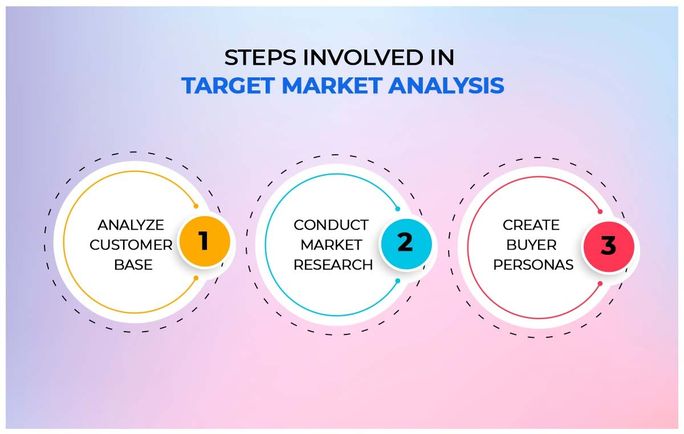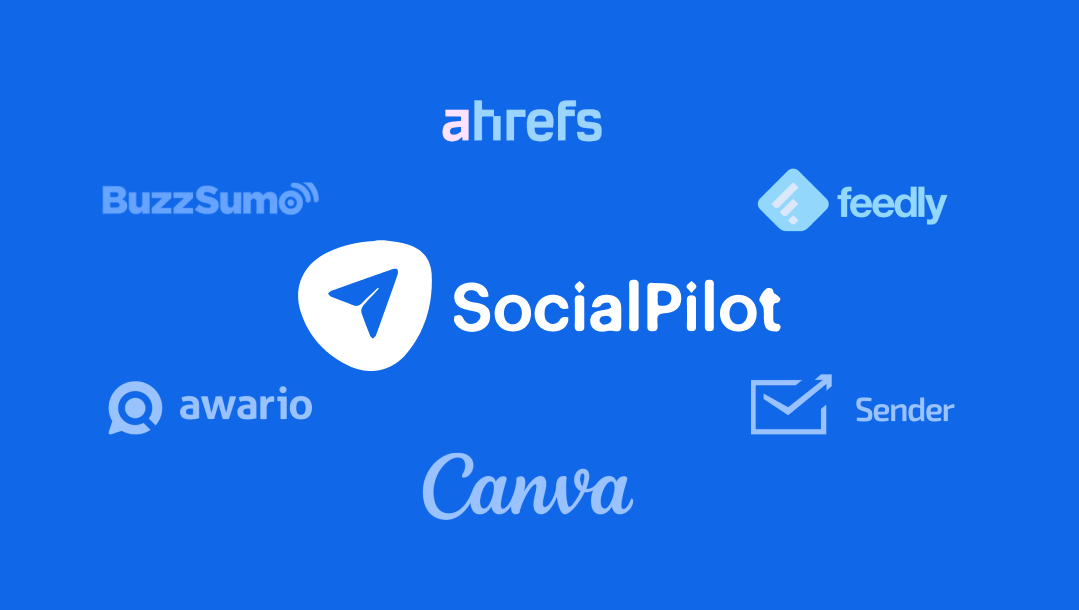The marketing world is full of buzzwords.
While certain terms are exactly what they sound like, such as pay-per-click marketing, others can be vague.
Yes, you know it. Those words where finding out the exact intent gets brain-racking.
Target audience and target market are two such terms that are often used interchangeably. But how many people actually know the difference between the two?
Understanding the differences between each will be essential in creating an effective marketing campaign that resonates with a section of your core consumer group.
Without further ado, let’s jump onto the beginner’s guide to target markets and target audiences.
What is a Target Market?
We could sum up the difference between target markets and audiences in a sentence or two, but that wouldn’t give you the knowledge you need to take action.
Breaking down the subject into specific sections will allow us to dive deeper into the marketing terms, and offer advice on how to use them within your business.
First, let’s tackle target markets. The target market is a particular group of people your product or service is intended for.
As a business owner, you usually would have your target market identified during your planning phase.
If you haven’t launched yet, or are currently in the infancy stages of your business, thinking critically about who would fit in your target market now will help you flesh out your marketing plans later.
Here are some examples:
Starbucks: Starbucks has an easily identifiable target market they try to capture through their brand experience and marketing. The popular coffee chain targets middle and upper-middle-class men and women that enjoy café style food and beverages. If you go to one of their locations, you’ll find a more upscale drink selection and an emphasis on perceived quality.
Dunkin’: On the other end of the spectrum from Starbucks is Dunkin’. Dunkin’ targets more “blue-collar” workers that enjoy a convenient food or beverage on the go. If you go to one of their locations, you will find that they’re more muted than Starbucks and try to offer a more fast-food-style experience.
As a note, not every company will have just one target market. If your business offers a variety of goods and services, then you likely have more than one target group.
What is a Target Audience?
Now that you know what a target market is, highlighting what a target audience is should help you start to realize the differences between the two.
A target audience is a narrower group of people within your target market that you’re aiming to reach with specific advertising strategies.
Your target audience encompasses the group of consumers who you most expect to purchase a product or service.
Within certain target audiences, there will likely be two subsets of people: you’ll have a decision-maker and a supporter. Let’s take a closer look at different target audiences to get a better understanding.
Lego: Legos and other toy products are interesting examples to look at, as they have two distinct target audiences they’re marketing for.
In Lego’s case, their target market is creative consumers that want to build fun models to play with. This would make you think that children aged 5-15 would be the target audience, but this group doesn’t have buying power.
In this situation, parents that are interested in providing fun and educational hobbies are the target audience as they’re the decision-maker; the kids would be the supporters in this case.
This means ads can be created that are intended both for parents and children. Lego often advertises its products in an educational nature, while still being exciting enough to hold younger consumers’ attention.
McDonald’s: Another interesting real-world example to look at is McDonald’s. As a result of their marketing tactics, the Happy Meal has become the most popular children’s item on their menu.
Again, we see the parents act as the target audience and the kids are the supporters. McDonald’s uses a two-pronged approach to market to both of these groups. They attract parents utilizing nutritional facts and other health information about the meals and include a themed toy to garner the child’s interest.
As with those above, your business should have multiple audiences that make up your overall target market.
How to Identify Possible Target Audiences?
Learning about target markets and audiences is the easy part, putting these lessons into action will be a different story.
Identifying potential audiences for your business to target will be necessary if you want to lead effective marketing campaigns. You could build the best product within a market and still have trouble finding success if you don’t position your brand effectively.
There are a variety of methods marketers use to identify relevant target audiences. Let’s take a look at a few that you can use for your business.

1. Analyze Your Existing Customer Base
If you’ve already been in business for a bit, you can use existing data to make future decisions. If you can, pull customer data such as age, income, area, interests, and more.
However, collecting this data can be troublesome. Moving forward, including surveys or online questionnaires with purchases is a great way to learn more about your core consumers.
2. Conduct Market Research
Looking across the entire industry is a great way to identify potential target audiences within a target market. Put yourself in the shoes of a consumer in this market and ask yourself: what type of content are you looking for?
Looking at what your competitors are doing should give you an idea of who you should be targeting and how.
3. Create Detailed Buyer Personas
Over the past few years, buyer personas have become a hot topic within the world of marketing. A buyer persona is a semi-fictional overview of the specific types of customers who would use your products or services.
Buyer personas are essentially narrow views of very specific consumers that interact with your brand. For example, the target audience of McDonald’s is parents that want a convenient dinner for the entire family.
But, a buyer persona for this situation may be a single dad that wants to be the “cool parent.” Creating buyer personas is a process and requires data to accomplish effectively.
How to Reach Your Target Audiences?
Now that you’ve established a target market and audience you’d like to reach, you need to craft a marketing campaign that will resonate with the right people.
This is the hardest part of the marketing process, but with the right mindset, you can do it. We aren’t going to walk through creating an entire marketing campaign here, but we’ll give you some tips and tricks to help you build a better strategy.
Bring on Additional Help
No matter if you’re a brand new startup, or if you’ve been in business for a year or two, bringing on additional help can improve your marketing efforts in a variety of ways.
As you set out to find new marketing talent to bring into your company, take the time to set up a hiring plan to help guide your efforts. A basic hiring plan will include the following:
1. Targeted Positions
You should identify a few positions that you think would add value to your company. In this situation, these will be marketing positions that are focused on content marketing, consumer behavior, and ad creation. Specific titles include: Director of Content Strategy, Market Research Analyst, and Director of Creative Services.
2. Estimated Budget
The cost of bringing on new hires will be high, but worthwhile. If you’re worried about having the necessary funds on hand to hire top talent, it may be worth looking into different types of loans that often can be used for business purposes.
When considering any outside financial product, remember to be prepared ahead of time. Taking the time to know how much money will be required, your personal credit score, and what credit score is needed for a personal loan, should help improve your odds of being approved.
The funds from a loan or other outside source will help you handle hiring costs, without depleting any savings you may have built up. Setting a budget early-on will help keep you in check once you start bringing in talent.
3. Recruiting Strategy
Finally, to hire top talent, you need to get them interested in working for your business. Creating a recruiting strategy to find and bring in qualified candidates is similar to building out a marketing plan.
You need to identify your target market and then think about the core audience you want to attract. To effectively reach them, we recommend doing things like posting to job boards, keeping active on social media, and attending recruitment events.
Hiring new people will help expand the capabilities of your marketing department, which, in turn, should help you more easily identify and reach your target audience.
Explore New Channels
Perhaps after running this exercise you’ve found that your marketing efforts and target audience weren’t aligned. This can happen if you wrongly identify your target audience. If this is the case for your business, don’t panic.
Fixing your brand’s positioning in the marketplace will take time, but it’s doable. First, let’s identify the types of channels where you can position your brand.
1. Local Print and Radio
If your target audience is in the 50-plus crowd, then using radio and print could work to your advantage. Today, radio and print ad space is rather cost-effective. Using this space to create targeted ads that showcase your brand is a great way to get in front of your target audience.
2. Social Media
Over the years, social media has replaced traditional advertising as the top channel to target consumers. With over 80% of the population in the U.S. having at least one social media account, there’s no reason not to try social media marketing.
But, choosing the right channels to market through will be important. If your consumer base is on the younger side, then using social media platforms such as TikTok or Instagram will be more effective.
On the flip side, if your target audience is older, then using platforms like Facebook and Twitter might be more fruitful. To help keep your content in order, you can use a social media management tool.
Besides these main channels, you can also try your hand at influencer marketing, affiliate marketing, and event marketing as ways to reach your target audience.
Final Words
After finally identifying both your target audience and target market, and carrying out a campaign that reaches your target audience, you may be asking yourself what you should do now?
As a marketer, you can always find ways to improve. Repeating this process over and over is the best way to fine-tune your overall marketing campaign.
When your campaign runs its course, take a step back and analyze all the information that you’ve gathered. Look over specific numbers, metrics, and results to measure how the campaign compared to past campaigns that didn’t have a previously identified target audience. Hopefully, you did better across the demographics you were targeting.
To gain more data than what your basic marketing platforms will provide, we recommend running some surveys and questionnaires to truly gauge how you did. Consider asking consumers and people within your target audience questions like:
- Did you buy X?
- Do you remember seeing X advertisement?
- What would make you buy X?
Using data gathered directly from your target audience will help you address areas that need improvement across your future marketing campaigns.
There you have it! Everything you need to know about target markets and target audiences. Hopefully, you can use this guide to your advantage and get in front of the right audience with the right message.
Remember, if you need any assistance getting the social media side of your marketing strategy up to par, SocialPilot is here to help. It helps you stay organized and on top of things with its automation, scheduling and analytics.
Go for a free trial today!



